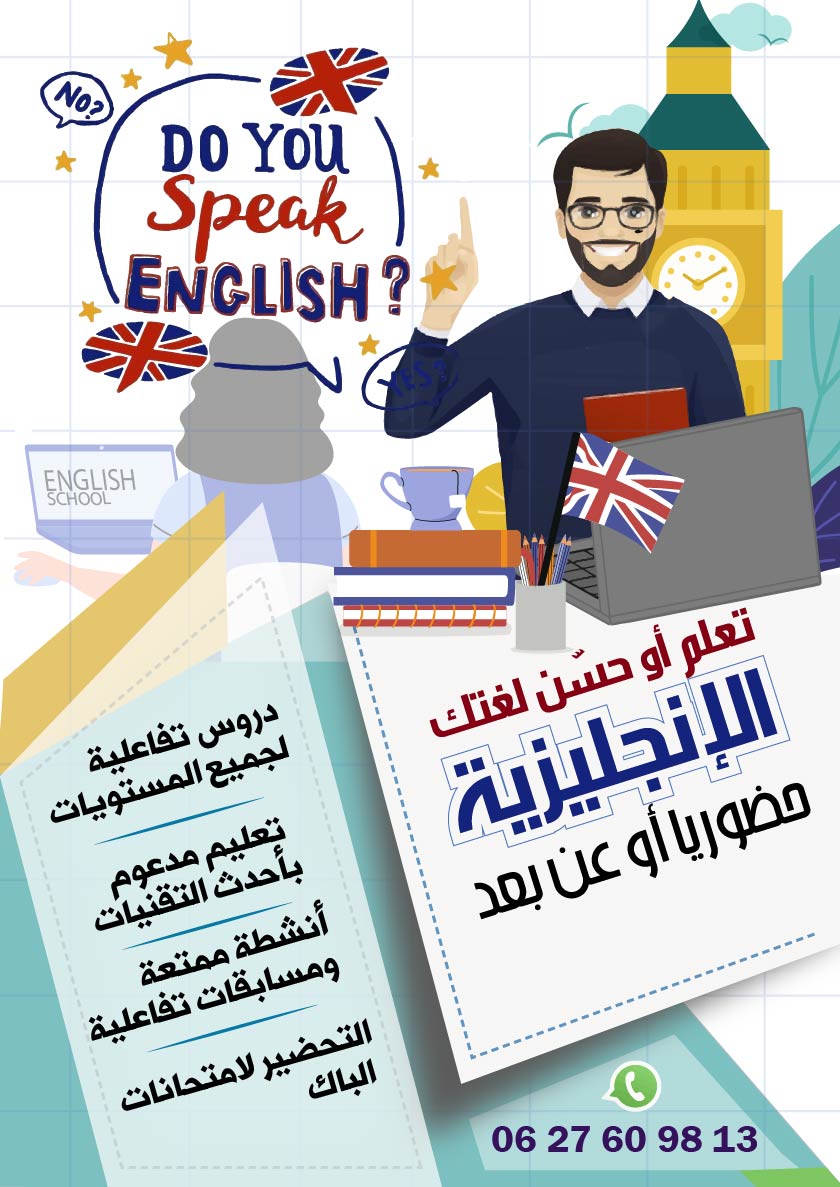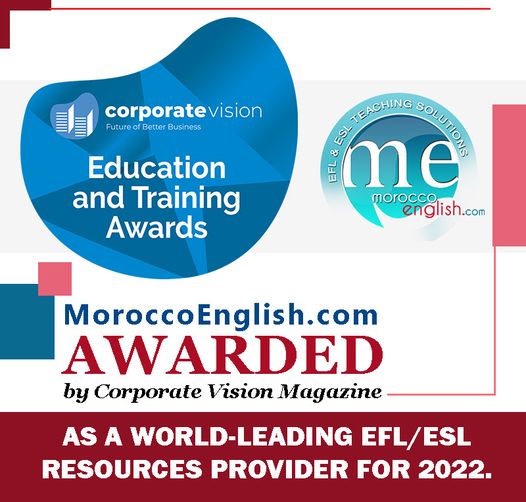Introduction
The term media was first used to describe newspapers more than two centuries ago. Today the term media takes many forms and has many types, such as mass media, print media, visual media and social media. While media can take on different forms, the purpose of all media is universally the same — media is a channel of communication. In today’s world media forms and technologies are part of everybody's life and used for many purposes, including business, entertainment…and above all education.
In fact, with the advent of learner centered approaches, EFL teachers are more encouraged to involve their students in their own learning, to link school learning with the learners' lives and experiences; and to develop learners' critical thinking and problem-solving skills. This can be achieved through the use of media in order to develop their language skills. In this context, instructors can engage students and produce more meaningful and deep learning experiences by using films, television shows, popular music, news stories, literature, documentaries, and videos….etc.
Research suggests that people learn abstract, new, and novel concepts more easily when they are presented in both verbal and visual form (Salomon, 1979). Other empirical research shows that visual media make concepts more accessible to a person than text media and help with later recall (Cowen, 1984). In Willingham's (2009) research, he asks a simple question to make his point, "Why do students remember everything that's on television and forget what we lecture?" — because visual media helps students retain concepts and ideas. Bransford, et al (1999:194) also note the crucial role that media technology plays for creating learning environments that extend the possibilities of one-way communication into new areas that require interactive learning.
The benefits of media on EFL teaching and learning
That is to say that media has many benefits on EFL learning. This is due to its ability to develop students’ knowledge of the material being taught. In fact, media facilitates the transfer of expert knowledge from the teacher to learners and makes it easier for them to remember what was taught. Media can also be used to engage students and facilitate their active learning strategies, which can promote deeper learning. Furthermore, many media sources have very high production quality that is capable of showcasing complex ideas, which save time and avoid students’ confusion.
The use of media sources helps learners connect with events that are culturally relevant. For instance, news stories can be used to connect theories taught in the classroom with real world events and policies. In this way, students can experience worlds beyond their own, especially if the media is sharply different from their local environment. Student-created media also; promotes individual learning, social interaction and immersion; and is highly customizable and collaborative (Yowell and Rhoten, 2009). Besides, student-created media also provide an alternative or a complement to traditional undergraduate and post graduate student research.
Not only these benefits, but media offers both cognitive and affective experiences. In this respect, media can promote interaction and discussions and an assessment of one's values and principles especially if the scenes have strong emotional content. Above all, using media in English language teaching and learning attracts students’ attention; develops interest; increases student motivation. For teachers, it helps them to be more effective, to be more creative, and to save time. These are the benefits of media in EFL learning, but how can teachers make use of it?
Types of media tha can be used in the EFL classroom
Using media requires the instructor to step outside of the traditional method of teaching and encourage his or her students to learn English through media. This approach works best when the classroom is well equipped and when the following media are used to teach English. First, bringing newspapers about different topics and issues to the classroom can help EFL learners to enhance their reading skills and help them discuss different issues and learn about problem-solving. Magazines can also be used as sources of pictures and postcards that can be used for learning how to analyze different discourses and how to understand hidden messages, political and cultural ones. Magazines are also helpful for beginners, through which they can be introduced to , for example, vocabulary of colors and clothes, means of transportation, and also to short stories…etc
In addition, TV programs may be used as warming-up activities for the coming issue and as supplementary materials for a certain topic. In this respect, the teacher can display TV programs, discuss with his or her students current news and update the information in the textbooks. Among TV programs, documentaries are also quite beneficial in the learning of EFL. Documentaries on Wildlife, on history, on culture, and others, have opened a valuable window for EFL learners, through which, they can improve their listening skills and open their eyes on worldwide issues.
It is also essential to encourage students to watch as many films as possible outside the classroom and even inside it and the teacher can set questions, promote discussions in small groups, and ask students to comment on various things in a given film in order to invite them to be critical and to have insights into the culture of negative speakers. The teacher can also stop the film from time to time to make sure that they are following and make them guess what might happen next. As for songs, they can help EFL learners acquire new vocabulary words and enhance their pronunciation. So, teachers can play songs especially at the end of the session and ask their students to listen carefully to a song and fill in the missing lyrics.
Concerning the new media within the internet, it includes search engines like google, they can make it easier for students to make research and broaden their knowledge. This can also be done through, blogs, online lectures and e-books, and above all educational WebPages. For example, the website livemocha.com is made up of English courses in different units, activities and in all levels along with tests, which makes of it a great opportunity to improve one’s level of English. Besides, social networks like facebook and twitter can be used to practice English through exchanging ideas and opinions and communicating with native speakers.
Methods of using media in the EFL classroom
To use such media effectively, there are different methods that have to be followed. First, before learning the concept, it is necessary for the teacher to introduce the media used and let his or her students know how it works in order to make them able to be actively involved in the lesson. EFL teachers are also said to ask students to brainstorm what they already know about the subject matter before incorporating a medium and this can be done to attract their attention to it. Selecting the appropriate media is important too and has to take into account students backgrounds, styles and needs. Moreover, it is necessary for teachers to evaluate students’ understanding through asking them about media content. This method would motivate them to pay more attention in each lesson, which will make them learn more and more.
Challenges of employing media in the EFL classroom
Therefore, using media can be sometimes be challenging for many EFL teachers. This is why they need to take into consideration many cautions before using it:
- First, using media requires attention to the learning objectives of the course taught.
- Second, teachers have to be aware of the changes happening in technology and be able to choose the effective ones and the ones that can be appropriate for students’ level of knowledge and that can raise their motivation.
- Third, since technology does not work 100% of the class time, teachers have to be well-prepared and have a backup plan. For instance, in case the media equipment breaks down, the teacher can go to plan B without difficulties.
- Fourth, using media requires a complete understanding of copyright law that accompanies using this medium in teaching.
- Last but not least, the overuse of technology can be like adding too much salt to a well prepared dish. So, it’s better for teachers to choose a medium that doesn’t waste time and that is short (generally 10 minutes or less) in order to leave the rest of the time for explanation and discussion.
Conclusion
All in all, using media in EFL teaching can be very effective and can have many benefits on the process of learning English. However, this depends on teachers’ being creative and competent. In this regard, teachers have to use media effectively and also to encourage their students to make use of the positive sides in media and to avoid its negative sides. All these efforts can guarantee a quicker and more successful process of learning English.
References
- ·Cowen, P. S. (1984). Film and text: Order effects in recall and social inferences. Educational Communication and Technology Journal, 32 (3), 131-144.
- ·Salomon, G. (1979). Interaction of media, cognition and learning. San Francisco, CA: Jossey-Bass. (Published again by Lawrence Erlbaum, 1994).
- Willingham, D. T. (2009). Why Don't Students Like School? San Francisco: Jossey-. Bass. Translation: Arabic: ABEGS Publishing.




































Thank you so much soufiane for sharing, you really did a good job since you managed to address different interesting points about media and EFL learning. Keep up!